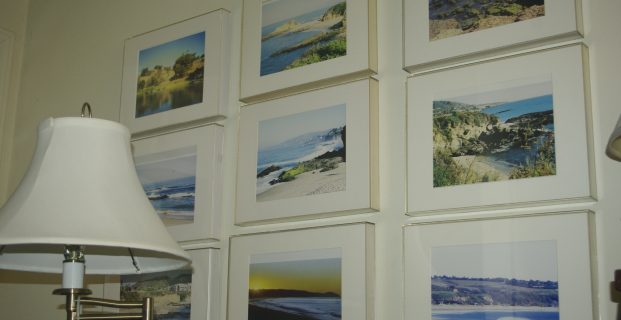The dictionary defines fine art imagery as a visual art which is to be appreciated for its imaginative, aesthetic or intellectual content. Such as photography that we like or are intrigued to look at.
With fine art photography “image quality” is key. Always aim to maximize quality both when you capture it and when it is printed.
Landscapes make popular fine art images because they are usually packed with detail. There is always something to come back to a second time that you may have missed.
Because of the many colors, textures and subjects in a scenic photographic, it can fit in well to most any interior design wall décor scheme. But even the best fine art image is nothing unless it is “Finished” properly.
After the image has been taken it needs to be Finished or printed. Printing materials come in many different surfaces. Glossy paper surface will accentuate detail and color. A matt paper surface is good for B&W pictures with continuous form, lines, and textures. Other paper surfaces include: semi-gloss, lustre, stipple and canvas. All of which can be printed with a quality ink jet printer. But to make “archival prints” both the paper and the ink must both be of archival quality. For this reason the ink should have a “pigment base”.
An often-neglected part of any photograph is its border. The edges of the frame define where the picture ends and our imagination begins. Now that the picture has been printed, the next step in the picture Finishing process is to Mount, Matt and Frame the picture.
Mounting a picture on a board helps to give it rigidity. These include the basic matt board, masonite hardboard, wood and now aluminum. Next comes the matt to help separate it from the frame.
A good rule of thumb for choosing the matt or a fillet, is to consider whether they add or subtract from the image. The fillet is a second matt that is used under the first, usually white matt, to show a thin line of color.
As for the frame, it all depends on the image and where it will hang o the wall. Frames can come in all shapes, sizes and types of materials: wood-painted or natural, shadow box, plastic and now aluminum. Above all the frame should never over power the picture.
Besides displaying a framed and matted photograph on the wall another good use to showcase your work is to use a photobook or artbook. Combine first rate pictures with text, graphics and slick 4 color printing and of course a nice hardback cover. These books can be done by a professional company or by a well-known internet company.
The secret to a good Art Book is not to cram too much into it. Be sure that the pictures are of excellent quality and related to each other. They should not be just a random collection of images.
Excellent, well Finished Fine Art photography can generate revenue. You can sell prints of your work to be used as photo décor in galleries, banks, offices and medical offices. Fine Art Books sold online can also sell very well.

